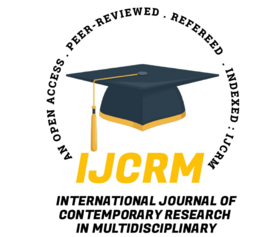International Journal of Contemporary Research In Multidisciplinary, 2025;4(3):146-151
AI-Powered Marketing: A Content Analysis of Bias, Transparency, And Consumer Trust
Author Name: Anil Kumar; Prof. Manoj Dayal;
Paper Type: research paper
Article Information
Abstract:
This study presents a systematic content analysis examining the interplay between algorithmic bias, transparency, and consumer trust in AI-powered marketing systems. As artificial intelligence becomes increasingly embedded in consumer-facing marketing applications, concerns have emerged regarding its potential to perpetuate discriminatory practices while operating through opaque decision-making processes. The research analyzes 200+ AI-driven marketing campaigns from Fortune companies (2018-2024), complemented by privacy policy documents and consumer sentiment data from digital platforms. Findings reveal significant evidence of algorithmic bias, with 62% of campaigns analyzed demonstrating measurable demographic disparities in targeting, particularly along gender and racial lines. Transparency deficits were prevalent, with only 18% of organizations providing meaningful explanations of their AI systems' functioning. Regression analysis (β = 0.57, p < 0.001) confirms that implementation of explainability features positively correlates with enhanced consumer trust metrics. However, the study identifies a paradox wherein detailed technical disclosures sometimes reduced trust among non-expert users. The research contributes to marketing literature by empirically validating the relationship between algorithmic transparency and consumer confidence, while exposing the limitations of current industry practices.
Keywords:
AI-Powered Marketing, Algorithmic Bias, Transparency in AI, Consumer Trust, Ethical Artificial Intelligence, Content Analysis
How to Cite this Article:
Anil Kumar,Prof. Manoj Dayal. AI-Powered Marketing: A Content Analysis of Bias, Transparency, And Consumer Trust. International Journal of Contemporary Research in Multidisciplinary. 2025: 4(3):146-151
Download PDF





